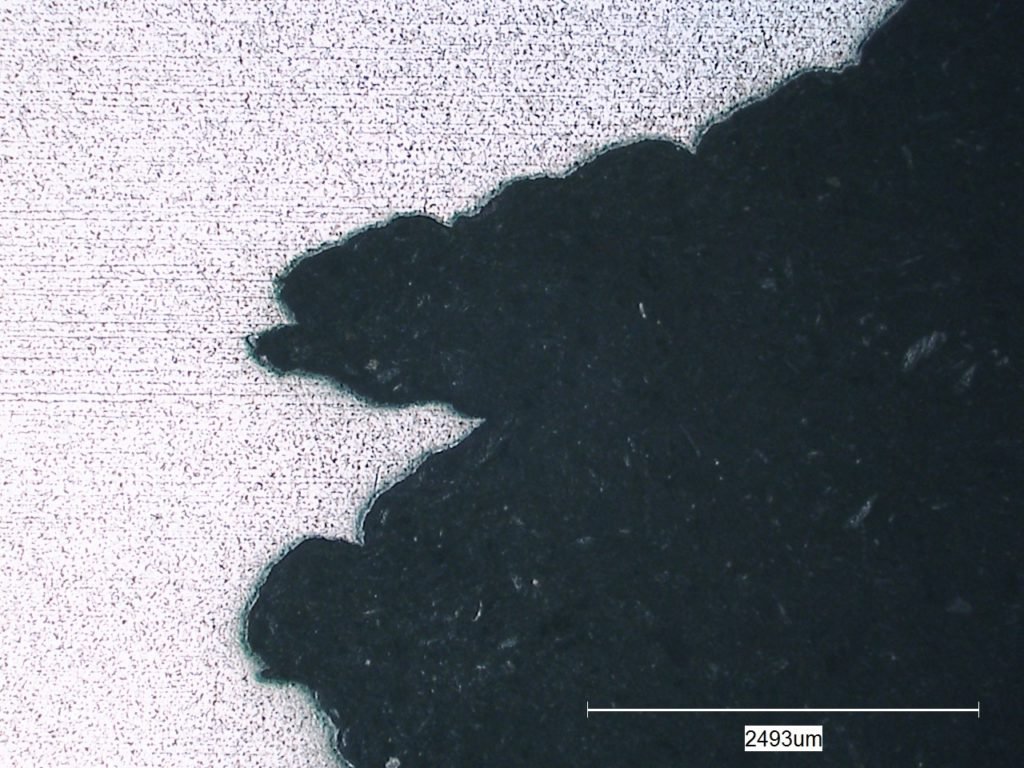This month’s case study describes a very interesting failure of a crude oil pipeline.
R-Tech Materials received a section of pipeline, with the request to determine the cause of corrosion (see Figure 1). The metal loss was confined to the bottom of the pipeline, between the 5 and 7 o’clock positions. The pits observed were clustered and overlapping with evidence of a lightly etched aureole around the pits. In addition, the pit interiors appeared to be relatively smooth with an undulating appearance.

Figure 1: Failed pipeline
Examination of the sections taken through the metal loss revealed scalloped, undercut pits within the main pit (see Figure 2). Analysis of the corrosion product associated with the pitting revealed the presence of iron and oxygen with small amounts of sulphur.

Figure 2: Undercutting within main pit
The morphology of the pitting observed indicated that the failure was attributable to microbiologically induced corrosion (MIC). Microbiological analysis revealed a moderate to heavy contamination with sulphide generating bacteria (SGB)/sulphate reducing bacteria (SRB) within the water phase of the oil removed from the pipeline.
In pipelines containing crude oil, any water contamination settles along the bottom. This stagnant water most likely containing organic material and deposits (from the crude oil) enable microbes to thrive. Sulphate reducing bacteria are anaerobic and their characteristic nature is that they reduce sulphates to sulphides and produce hydrogen sulphide. Sulphide generation can be due to this direct reduction by the SRB, though the generation of sulphide may also be due to complementary activity between different bacteria in a consortium; individuals in a consortium can produce nutrients which are required by other species (including the SRB). Colonies of SRB/SGB can form deposits that are then conducive to underdeposit corrosion. In most cases, the resultant corrosion is due to differential concentration, though the production of hydrogen sulphide in a crevice region would also accelerate corrosion rates. Corrosion is normally self-limited due to the build-up of corrosion products. However, microbes can absorb some of these materials in their metabolism, thus removing them from the anodic and cathodic sites. The removal of corrosion products then accelerates corrosion.
This type of corrosion mechanism can be prevented by chemical treatment with the use of chlorine, bromine, ozone or other chemicals. Furthermore, a high-quality bacteria-resistant epoxy coating could be applied.
A failure analysis of this type is a valuable and informative tool to reduce the likelihood of a repeat incident which improves safety and productivity, reduces the risk of unplanned outages and enables evolution towards a better product. Would you like to know more about our Failure Analysis services? Contact us today to find out more!